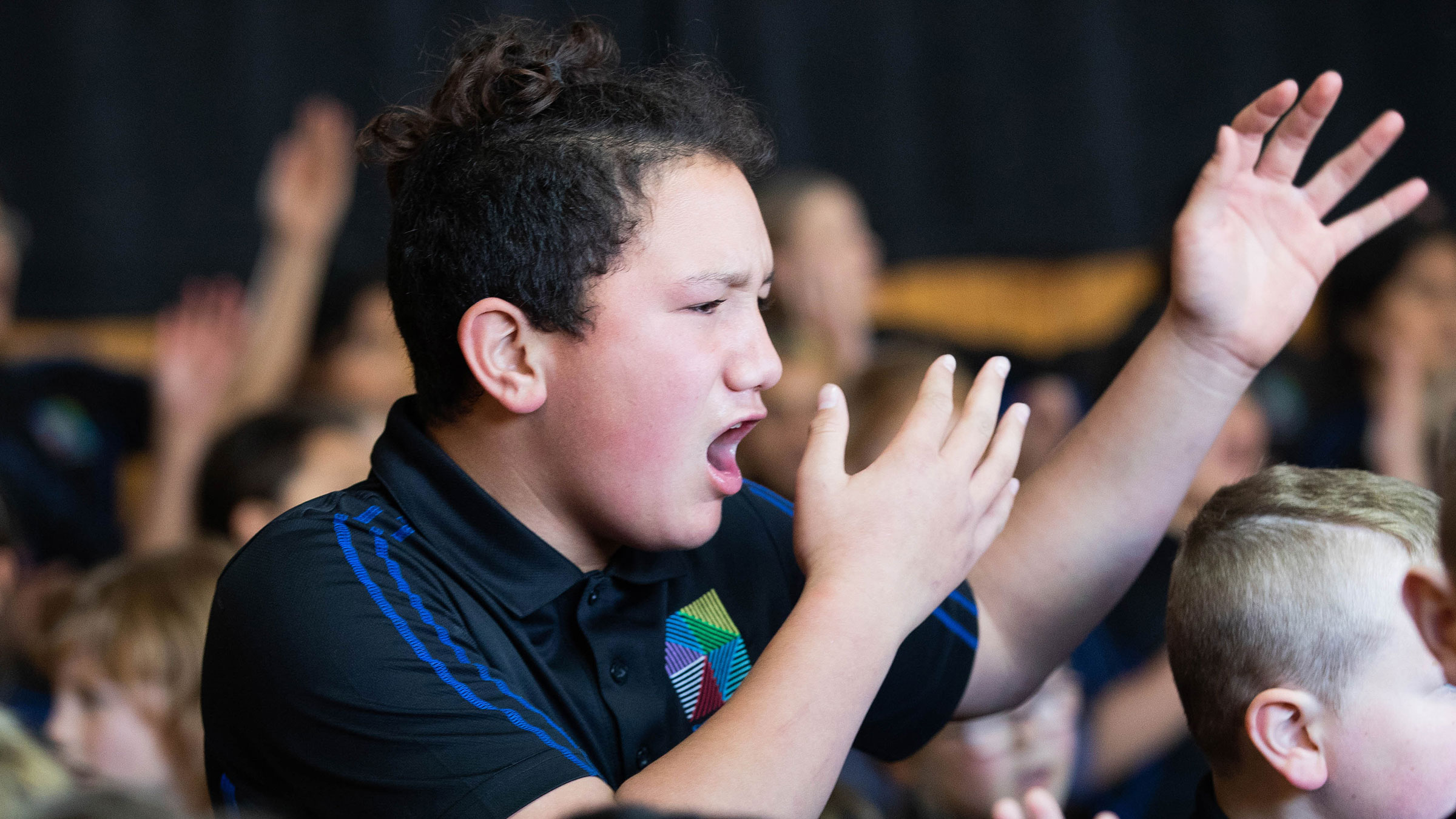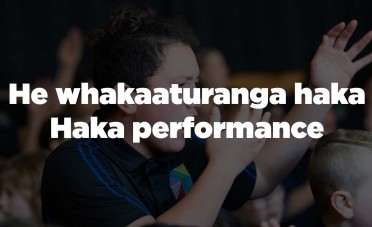Waiata-ā-ringa Action songs
Practice and perform waiata-ā-ringa.
Exploring te ao kori — Activity collections
This resource is part of a series within the Exploring te ao kori activity collections called Te reo kori me te nekehanga | Voice and movement.

Intended outcomes
Ākonga:
- share their group’s waiata-ā-ringa, and express feelings about both performing and watching others' waiata-ā-ringa
- describe how they see themselves in relation to movement activities
- use their imagination as they participate in hand and body actions to depict a song
- learn a waiata-ā-ringa from memory and sing as a member of a group
- use personal experiences and imagination to create movements in response to songs
- perform action songs waiata-ā-ringa paying attention to breath, pitch, rhythm, and strategy/theme kaupapa
- perform an action song waiata-ā-ringa, singing in tune and in time with each other
- demonstrate an understanding of the tikanga and wairua involved in performing waiata
- perform a waiata-ā-ringa for a particular purpose
- describe what a waiata-ā-ringa is and why it is performed
- learn the movement vocabularies of waiata-ā-ringa
- experience ways in which messages are expressed through waiata-ā-ringa and demonstrate understanding of this.
Suggested approach
Level 1
Select an appropriate song for the class to learn; for example, 'One Day a Taniwha', 'Noke, Kei Hea te Tuna?', or 'Whakawhiti Rori'.
Help the class to understand and sing the words. Guide ākonga to suggest and explore ways each line may be illustrated by movement.
For example:
One Day a Taniwha
One day a taniwha, went swimming in the moana
He whispered in my taringa, (taringa, taringa)
“Won't you come with me?
There's such a lot to see,
Underneath the deep blue sea”
I said, "Kāore, kāore, kāore,
I have to haere, haere, haere.
Although I know we could be friends,
My mother’s waiting for me
Underneath the kōwhai tree
Taniwha, haere rā."
Beatrice Piatarihi Tui Yates (Aunty Bea) 1974
Take the first line, “One day a taniwha, went swimming in the moana.”
- Explore different shapes that could represent a taniwha.
- Explore different swimming styles – dog paddle, overarm, breaststroke.
- Decide what shapes/movements will be retained for illustrating this line of the song.
Repeat the above process with each line of the song. As a class, practise the selected movements in sequence with the song as it is played or sung.
Reflect upon the experience of making and performing these movements while singing.
- What movements did you like or find the hardest to do?
- Were you able to change your movements in time with the words of the song?
- Were you able to control your breathing by singing and moving at the same time?
- How well did you sing the tune and stay in time with others?
Level 2
For level 2 ākonga who have had previous experience in making up their own movements to waiata as above, a waiata song can be introduced and groups of ākonga may be asked to make up movements on their own, using hand and body actions to reflect the meaning of the words.
Ākonga practice the singing and the actions together so that the voice, movements, and expressions are coordinated.
Each group performs the action song for the class.
Ākonga reflect upon the different ways in which each group interpreted and choreographed their action song to the words of the same song. They also reflect on their musical performance by considering how well they stayed in tune and in time with each other and how it felt to sing together as a community of learners doing exactly the same thing at the same time. How well did they attend to tikanga and understand the strategy/theme kaupapa of performing action songs waiata-ā-ringa?
Level 3
Introduce ākonga to live or videoed examples of waiata-ā-ringa. There are examples of waiata-ā-ringa performances on the internet; have a look as part of your planning and notice where the videos have come from to ensure that you are showing ākonga authentic and relevant tī rākau performances.
Explore what ākonga already know of this genre of Māori dance and music:
- What are its characteristics?
- How do the movements relate to the words?
- How do the movements relate to the music?
- Why are the men and women in separate rows?
Ākonga learn to sing waiata such as Tūtira Mai ngā Iwi (a good frame of reference for this waiata is offered in the level 2 social studies exemplar, 'Haere Mai Ngā Manuhiri'.)
Help ākonga to explore how they can portray the meanings of the words in movement.
In groups of three to five, ākonga create a group sequence of actions for the waiata to portray the meaning of the words and the structure of the music. Clarify whether or not ākonga are to do the movements in time with the music and to sing the words as they move.
- Ākonga present their waiata sequence to the rest of the class.
- As a class, discuss the differences between the groups' sequences, identifying those aspects of the sequences that they enjoyed or found interesting.
- Ākonga learn the customary actions (from local hapū or iwi) to this waiata and compare these actions to those that they created themselves.
- Ākonga perform the waiata-ā-ringa to another class or at a school assembly.
- Ākonga can discuss the cultural values in the song and reflect on how some of the messages in the song affected their feelings and in what ways the action waiata-ā-ringa activities contribute to their sense of self-worth.
Ākonga should understand the kaupapa of performing waiata-ā-ringa, the strategy/theme tikanga, and importance of making the best quality musical performance by learning to sing in tune and in time with each other and the wairua of singing together.

